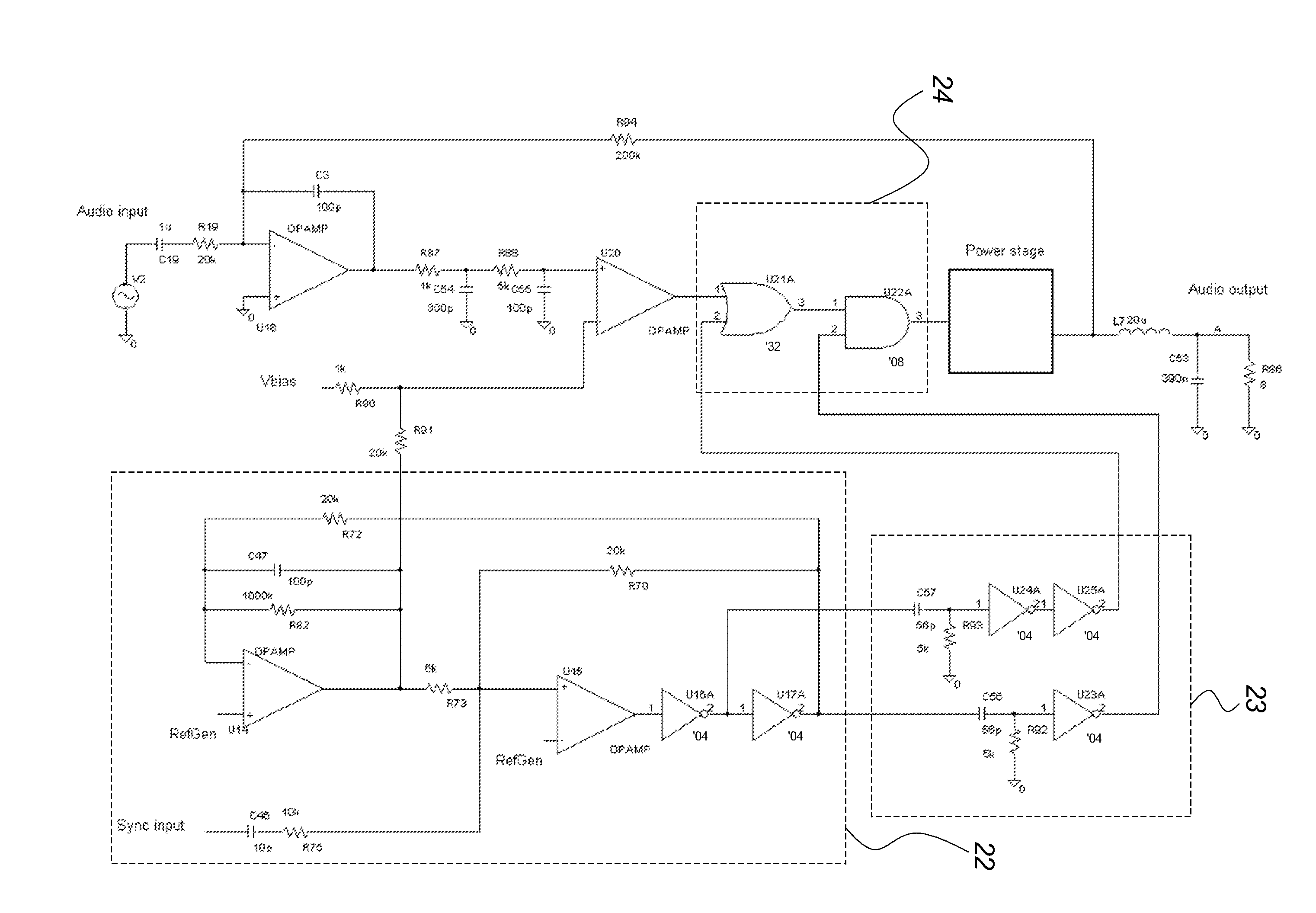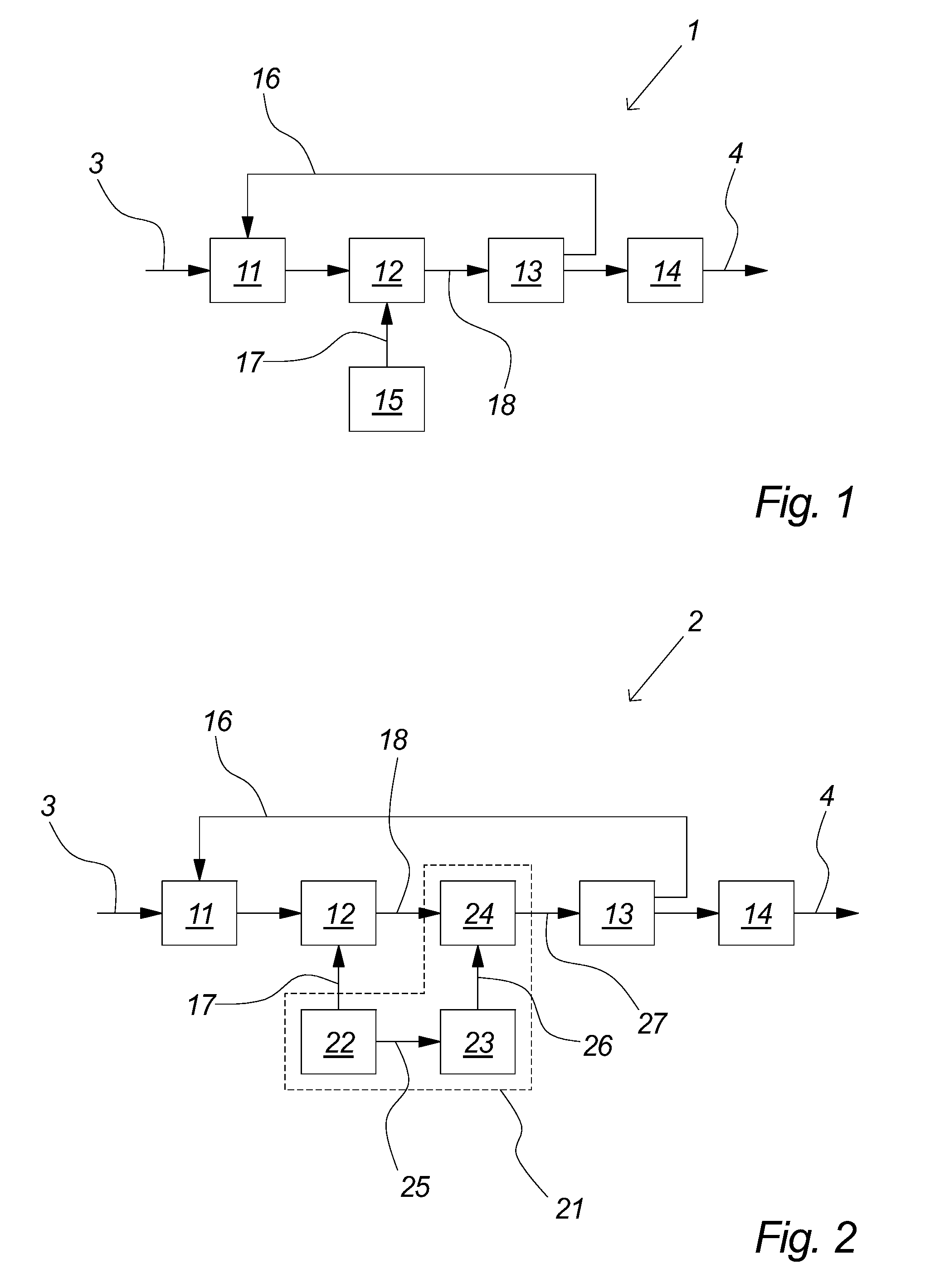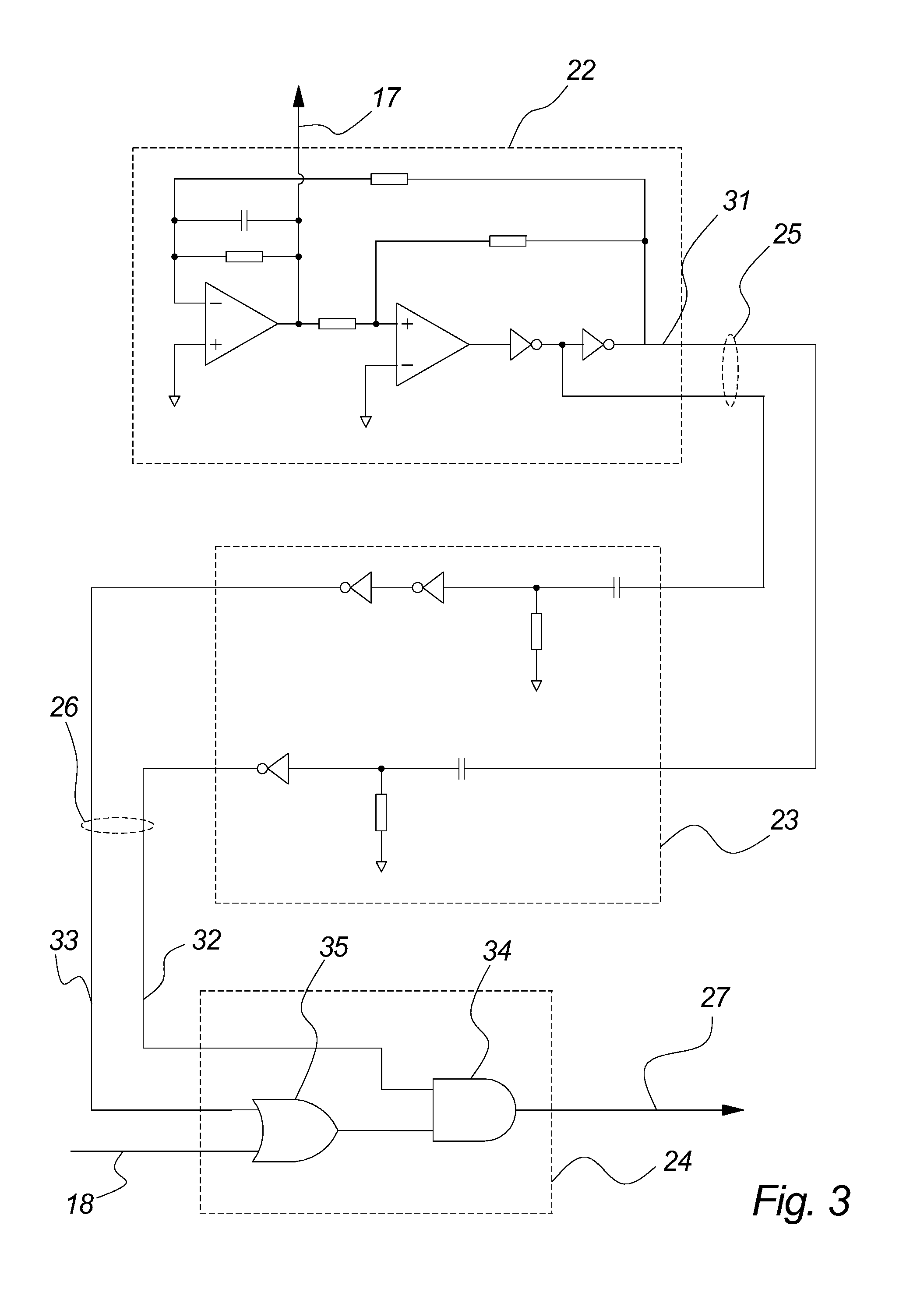Self-oscillating modulator with improved synchronisation and pwm cycle constraints
a self-oscillating, modulator technology, applied in pulse duration/width modulation, electrical apparatus, pulse technique, etc., can solve the problems of increasing the problem of cross-talk between other system components, affecting the operation of the amplifier at the same time, and the disadvantage of the self-oscillating pwm amplifier
- Summary
- Abstract
- Description
- Claims
- Application Information
AI Technical Summary
Benefits of technology
Problems solved by technology
Method used
Image
Examples
Embodiment Construction
[0087]FIG. 1 illustrates a self-oscillating amplifier 1 wherein the problem of fluctuating switch frequency has been reduced by the known method of adding a small-signal periodic reference signal to the signal being amplified. It comprises a controller 11, comprising a suitable loop filter, preferably a linear low pass filter provided by an integrator, which provides suitable oscillation conditions in the loop. The controller 11 receives an input signal 3, e.g. an analog or digital audio signal, and its output is coupled to a modulator 12, comprising a suitable non-linear device, e.g. a comparator, which establishes a pulse width modulated (PWM) signal 18 from the output of the controller 11. The pulse width modulated signal 18 is amplified by a an output stage 13, comprising a suitable switching power stage, comprising suitable power switches, e.g. power FET's, controlled by the pulse width modulated signal 18. The output of the output stage 13 is preferably smoothed, i.e. decoded,...
PUM
 Login to View More
Login to View More Abstract
Description
Claims
Application Information
 Login to View More
Login to View More - R&D
- Intellectual Property
- Life Sciences
- Materials
- Tech Scout
- Unparalleled Data Quality
- Higher Quality Content
- 60% Fewer Hallucinations
Browse by: Latest US Patents, China's latest patents, Technical Efficacy Thesaurus, Application Domain, Technology Topic, Popular Technical Reports.
© 2025 PatSnap. All rights reserved.Legal|Privacy policy|Modern Slavery Act Transparency Statement|Sitemap|About US| Contact US: help@patsnap.com



